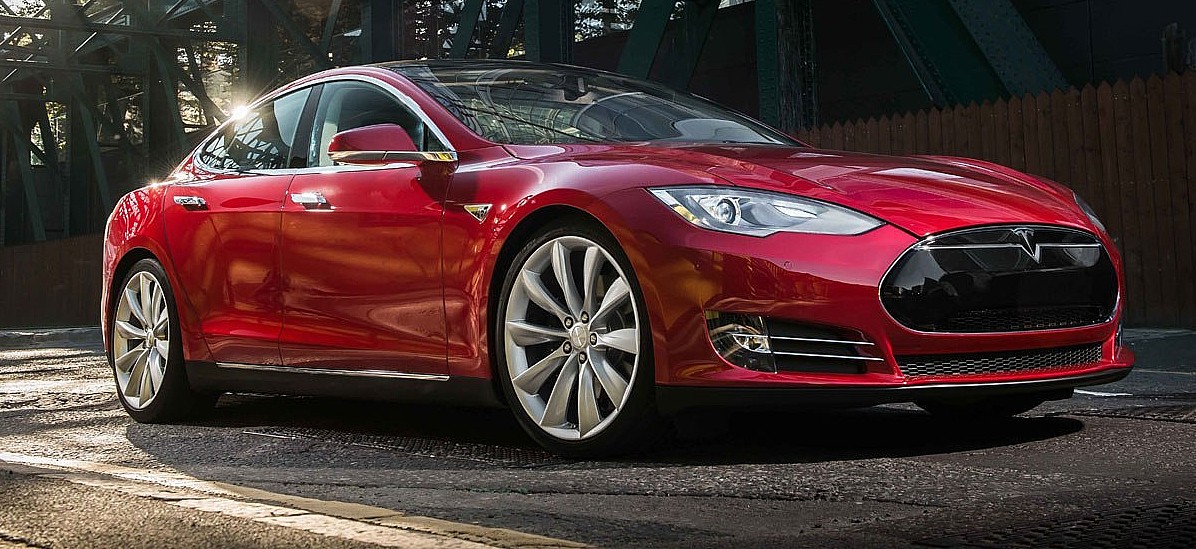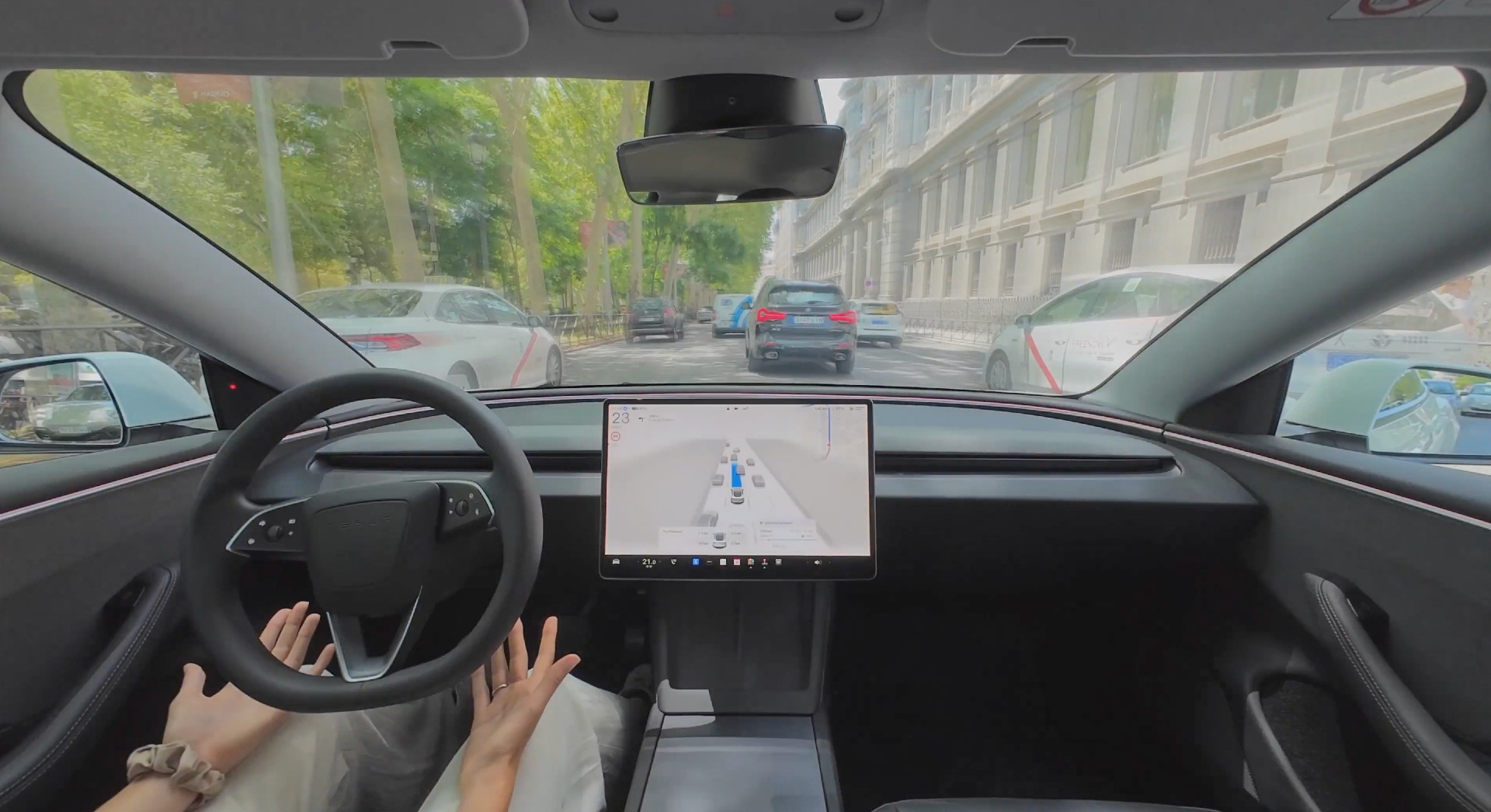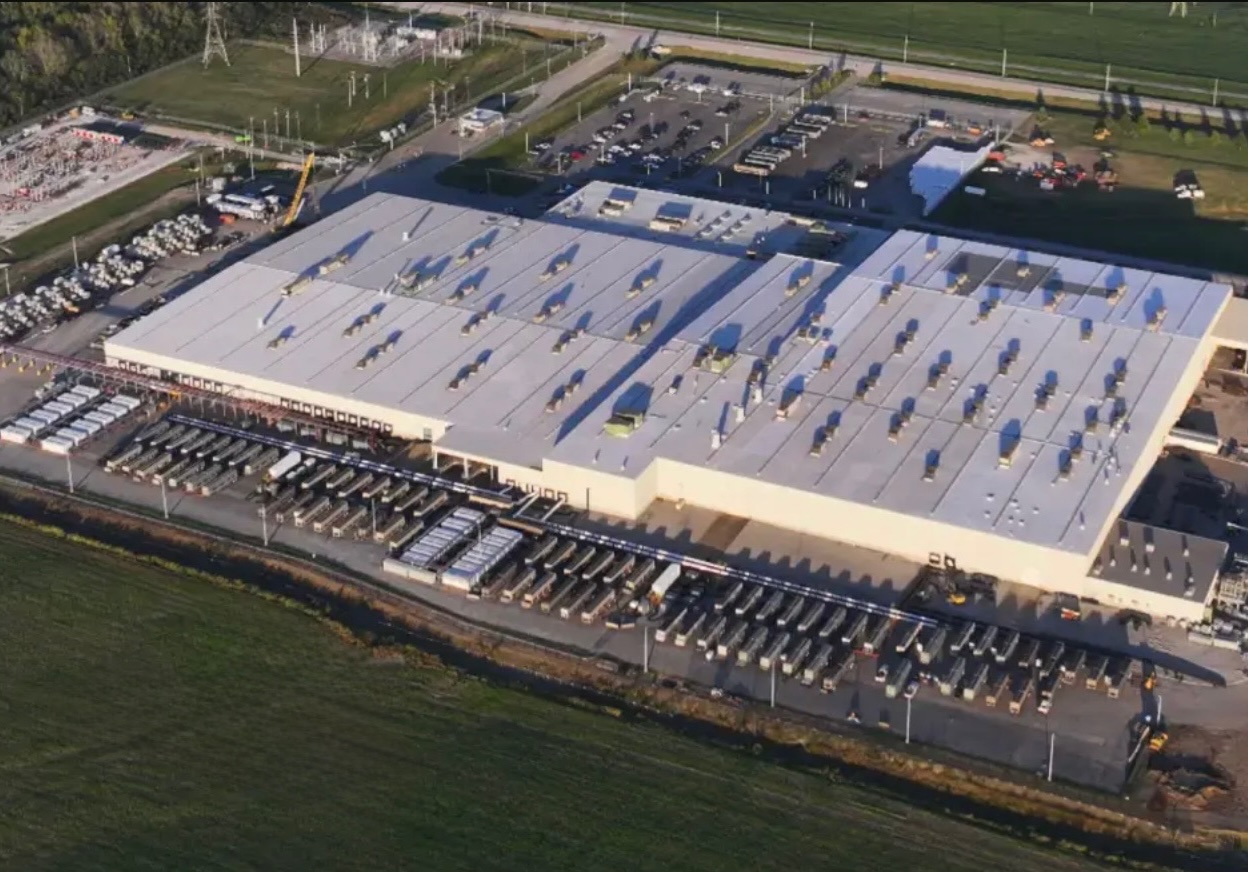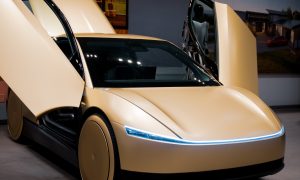

News
Tesla Model S beats 70 years of motoring legends to win MotorTrend’s Ultimate Car of the Year award
After seven years in the market, multiple awards, and establishing itself as the undisputed king of premium electric sedans, the Tesla Model S has earned what could very well be its most impressive award to date. Just recently, the Model S, the first vehicle designed from the ground up by Tesla, was dubbed by MotorTrend as its Ultimate Car of the Year, beating 70 years worth of motoring legends in the process.
MotorTrend started its Car of the Year awards in 1949, which was won by Cadillac. Over the years, the publication’s Car of the Year award would expand to several segments such as Imports, Trucks, and SUVs. Despite this, each winner of the esteemed award had one thing in common: each vehicle scored very well under the publication’s six criteria — Advancement in Design, Engineering Excellence, Efficiency, Performance of Intended Function, Value, and Safety.
With MotorTrend celebrating its 70th anniversary, the publication opted to do something special this year. Ninety-two vehicles have received the Car of the Year award to date, but as mentioned by the publication in an announcement, one of these 92 vehicles is more significant than the others. From this 92, eight finalists were selected, corresponding to every decade that the publication has been active. These vehicles are the 1949 Cadillac lineup, the 1955 Chevrolet lineup, the 1968 Pontiac GTO, the 1972 Citroën SM, the 1986 Mazda RX-7, the 1996 Dodge Caravan, the 2004 Toyota Prius, and the 2013 Tesla Model S.

While the 2010-2020 decade is not over yet, it is difficult to argue that the most essential car of recent years is the Tesla Model S. Created as a successor to the original Tesla Roadster and designed to prove that all-electric cars can be viable (and even superior) alternatives to gas and diesel-powered sedans, the Model S was a groundbreaking vehicle from the inside out. The sedan’s production ramp experienced some delays considering Tesla’s inexperience (the company had only been producing the low-volume Roadsters when the Model S came out), but when it did, it shook the auto industry to its core.
MotorTrend calls the Model S as a “rolling manifesto,” a car that personifies CEO Elon Musk’s view of electric vehicles as tomorrow’s form of transportation. Even before its insanely quick configurations were released, the original Model S proved enough to disrupt the luxury sedan segment. Thanks to its rear-mounted electric motor, it was quick off the line, hitting 0-60 mph in 4.0 seconds, it seated seven (two in jump seats), and it was also incredibly efficient. What’s more, it had 265 miles of range per charge, showing the auto industry that electric cars can go the distance too, literally. These, together with the vehicle’s never-before-seen tech, ultimately helped the Model S become MotorTrend’s 2013 Car of the Year.
The Model S is more than a great electric car. Rather, it is an excellent vehicle that just happens to be electric. Bold and progressive, Tesla’s flagship sedan still stands as the gold standard that competing EVs today are still benchmarked against. Constantly evolving thanks to free, over-the-air updates from Tesla, the Model S also stands as one of the only vehicles released this decade that actually becomes better with age. For MotorTrend, these characteristics make the Model S deserving of the Ultimate Car of the Year award, perhaps even more.
“No vehicle we’ve awarded, be it Car of the Year, Import Car of the Year, SUV of the Year, or Truck of the Year, can equal the impact, performance, and engineering excellence that is our Ultimate Car of the Year winner, the 2013 Tesla Model S,” the publication wrote.
MotorTrend’s feature on the Tesla Model S as a finalist in its Ultimate Car of the Year awards could be accessed here. The final results of the awards could be accessed here.
The Tesla Model S’ Ultimate Car of the Year award comes just a day after its smaller sibling, the Model 3, was deemed as the 2019 Car of the Year and 2019 Premium Electric Car of the Year by AutoExpress UK. Just like its larger sibling, the Model 3 was granted the accolade for its perfect blend of technology and driving dynamics, making the car that a likely disruptor in the auto industry, but in a much bigger scale.
Elon Musk
Why Tesla’s Q3 could be one of its biggest quarters in history
Tesla could stand to benefit from the removal of the $7,500 EV tax credit at the end of Q3.

Tesla has gotten off to a slow start in 2025, as the first half of the year has not been one to remember from a delivery perspective.
However, Q3 could end up being one of the best the company has had in history, with the United States potentially being a major contributor to what might reverse a slow start to the year.
Earlier today, the United States’ House of Representatives officially passed President Trump’s “Big Beautiful Bill,” after it made its way through the Senate earlier this week. The bill will head to President Trump, as he looks to sign it before his July 4 deadline.
The Bill will effectively bring closure to the $7,500 EV tax credit, which will end on September 30, 2025. This means, over the next three months in the United States, those who are looking to buy an EV will have their last chance to take advantage of the credit. EVs will then be, for most people, $7,500 more expensive, in essence.
The tax credit is available to any single filer who makes under $150,000 per year, $225,000 a year to a head of household, and $300,000 to couples filing jointly.
Ending the tax credit was expected with the Trump administration, as his policies have leaned significantly toward reliance on fossil fuels, ending what he calls an “EV mandate.” He has used this phrase several times in disagreements with Tesla CEO Elon Musk.
Nevertheless, those who have been on the fence about buying a Tesla, or any EV, for that matter, will have some decisions to make in the next three months. While all companies will stand to benefit from this time crunch, Tesla could be the true winner because of its sheer volume.
If things are done correctly, meaning if Tesla can also offer incentives like 0% APR, special pricing on leasing or financing, or other advantages (like free Red, White, and Blue for a short period of time in celebration of Independence Day), it could see some real volume in sales this quarter.
You can now buy a Tesla in Red, White, and Blue for free until July 14 https://t.co/iAwhaRFOH0
— TESLARATI (@Teslarati) July 3, 2025
Tesla is just a shade under 721,000 deliveries for the year, so it’s on pace for roughly 1.4 million for 2025. This would be a decrease from the 1.8 million cars it delivered in each of the last two years. Traditionally, the second half of the year has produced Tesla’s strongest quarters. Its top three quarters in terms of deliveries are Q4 2024 with 495,570 vehicles, Q4 2023 with 484,507 vehicles, and Q3 2024 with 462,890 vehicles.
Elon Musk
Tesla Full Self-Driving testing continues European expansion: here’s where
Tesla has launched Full Self-Driving testing in a fifth European country ahead of its launch.

Tesla Full Self-Driving is being tested in several countries across Europe as the company prepares to launch its driver assistance suite on the continent.
The company is still working through the regulatory hurdles with the European Union. They are plentiful and difficult to navigate, but Tesla is still making progress as its testing of FSD continues to expand.
Today, it officially began testing in a new country, as more regions open their doors to Tesla. Many owners and potential customers in Europe are awaiting its launch.
On Thursday, Tesla officially confirmed that Full Self-Driving testing is underway in Spain, as the company shared an extensive video of a trip through the streets of Madrid:
Como pez en el agua …
FSD Supervised testing in Madrid, Spain
Pending regulatory approval pic.twitter.com/txTgoWseuA
— Tesla Europe & Middle East (@teslaeurope) July 3, 2025
The launch of Full Self-Driving testing in Spain marks the fifth country in which Tesla has started assessing the suite’s performance in the European market.
Across the past several months, Tesla has been expanding the scope of countries where Full Self-Driving is being tested. It has already made it to Italy, France, the Netherlands, and Germany previously.
Tesla has already filed applications to have Full Self-Driving (Supervised) launched across the European Union, but CEO Elon Musk has indicated that this particular step has been the delay in the official launch of the suite thus far.
In mid-June, Musk revealed the frustrations Tesla has felt during its efforts to launch its Full Self-Driving (Supervised) suite in Europe, stating that the holdup can be attributed to authorities in various countries, as well as the EU as a whole:
Tesla Full Self-Driving’s European launch frustrations revealed by Elon Musk
“Waiting for Dutch authorities and then the EU to approve. Very frustrating and hurts the safety of people in Europe, as driving with advanced Autopilot on results in four times fewer injuries! Please ask your governing authorities to accelerate making Tesla safer in Europe.”
Waiting for Dutch authorities and then the EU to approve.
Very frustrating and hurts the safety of people in Europe, as driving with advanced Autopilot on results in four times fewer injuries!
Please ask your governing authorities to accelerate making Tesla safer in Europe. https://t.co/QIYCXhhaQp
— Elon Musk (@elonmusk) June 11, 2025
Tesla said last year that it planned to launch Full Self-Driving in Europe in 2025.
Elon Musk
xAI’s Memphis data center receives air permit despite community criticism
xAI welcomed the development in a post on its official xAI Memphis account on X.

Elon Musk’s artificial intelligence startup xAI has secured an air permit from Memphis health officials for its data center project, despite critics’ opposition and pending legal action. The Shelby County Health Department approved the permit this week, allowing xAI to operate 15 mobile gas turbines at its facility.
Air permit granted
The air permit comes after months of protests from Memphis residents and environmental justice advocates, who alleged that xAI violated the Clean Air Act by operating gas turbines without prior approval, as per a report from WIRED.
The Southern Environmental Law Center (SELC) and the NAACP has claimed that xAI installed dozens of gas turbines at its new data campus without acquiring the mandatory Prevention of Significant Deterioration (PSD) permit required for large-scale emission sources.
Local officials previously stated the turbines were considered “temporary” and thus not subject to stricter permitting. xAI applied for an air permit in January 2025, and in June, Memphis Mayor Paul Young acknowledged that the company was operating 21 turbines. SELC, however, has claimed that aerial footage shows the number may be as high as 35.
Critics are not giving up
Civil rights groups have stated that they intend to move forward with legal action. “xAI’s decision to install and operate dozens of polluting gas turbines without any permits or public oversight is a clear violation of the Clean Air Act,” said Patrick Anderson, senior attorney at SELC.
“Over the last year, these turbines have pumped out pollution that threatens the health of Memphis families. This notice paves the way for a lawsuit that can hold xAI accountable for its unlawful refusal to get permits for its gas turbines,” he added.
Sharon Wilson, a certified optical gas imaging thermographer, also described the emissions cloud in Memphis as notable. “I expected to see the typical power plant type of pollution that I see. What I saw was way worse than what I expected,” she said.
-

 Elon Musk3 days ago
Elon Musk3 days agoTesla investors will be shocked by Jim Cramer’s latest assessment
-

 News1 week ago
News1 week agoTesla Robotaxi’s biggest challenge seems to be this one thing
-

 News2 weeks ago
News2 weeks agoTexas lawmakers urge Tesla to delay Austin robotaxi launch to September
-

 Elon Musk2 weeks ago
Elon Musk2 weeks agoFirst Look at Tesla’s Robotaxi App: features, design, and more
-

 Elon Musk2 weeks ago
Elon Musk2 weeks agoxAI’s Grok 3 partners with Oracle Cloud for corporate AI innovation
-

 News2 weeks ago
News2 weeks agoSpaceX and Elon Musk share insights on Starship Ship 36’s RUD
-

 News2 weeks ago
News2 weeks agoWatch Tesla’s first driverless public Robotaxi rides in Texas
-

 News2 weeks ago
News2 weeks agoTesla has started rolling out initial round of Robotaxi invites















